The Witu Islands… There are two things that strike you when you arrive at the Witus – firstly they are an incredibly scenic part of the world. The islands are the peaks of subsea volcanoes that rise up from the deep waters of the Bismarck Sea. And the main island Garove is actually the caldera left after a major eruption some 200 to 300 years ago..

About 12km wide, Garove is an impressive site when viewed from the air (courtesy of a drone). The caldera’s crater is roughly 5km wide and surrounded by 100m to 150m high walls.
Those walls are breached on the southern side of the island. So the caldera is flooded and forms a superb natural harbor named after the German humanist and theologian Johann Albrecht.
So the caldera is flooded and forms a superb natural harbor named after the German humanist and theologian Johann Albrecht.
Copra and cocoa are grown on the islands. Pioneered by the legendary Dickie Doyle, who sadly passed away in 2013.
The second thing that will probably catch your interest will be the names of the dive sites.
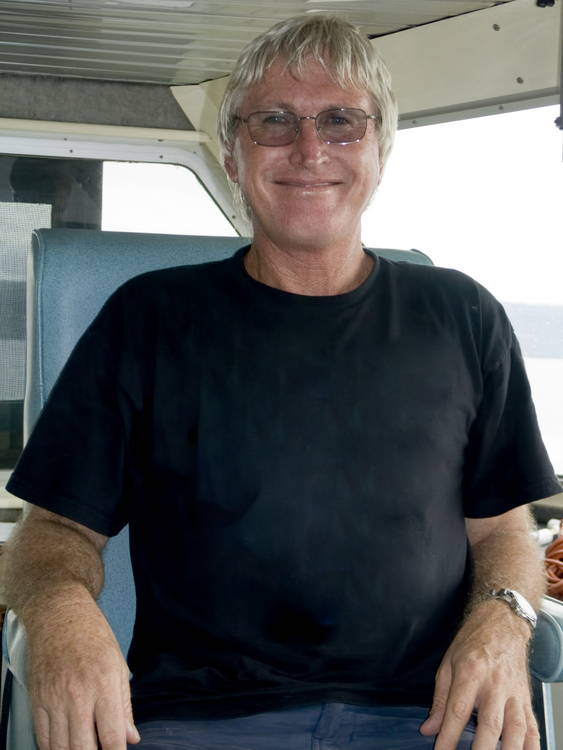
And we can thank Alan Raabe, the other great pioneer of the Witu’s, for their quite interesting names… Alan, on his boat the Febrina, discovered and then named all the sites at the Witu’s. And clearly let his irrepressible and wicked Australian sense of humor roam free when it came to the naming part!
The Witu Islands – Underwater
The diving at the Witu’s falls in to two basic categories. Classic but glorious fringing reefs and interesting black volcanic muck!
Viewed from a drone the fringing reefs are really quite spectacular. While underwater the rich waters of the Bismarck Sea and the isolation of the Witu’s have combined to create incredible self-contained ecosystems that pulse with life.
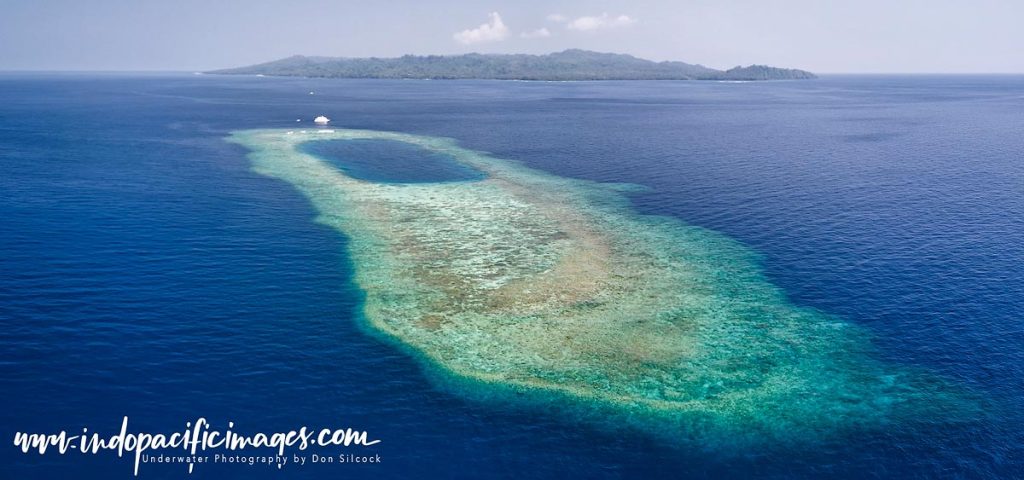
The tops and sides of the reefs have dense coatings of beautiful, healthy hard corals that host a plethora of reef fish. Then, the reef walls start to descend down in to the depths. Here you will find equally healthy and very photogenic sponges, sea fans, anemones and soft corals.
Out in the blue will be schooling jacks, barracuda and batfish. Plus patrolling grey reef and white tip sharks will hang back in the distance. Whenever I dive places like the Witu Islands the same thoughts always come to mind. One day, not that long ago, all reefs must have been a bit like this!

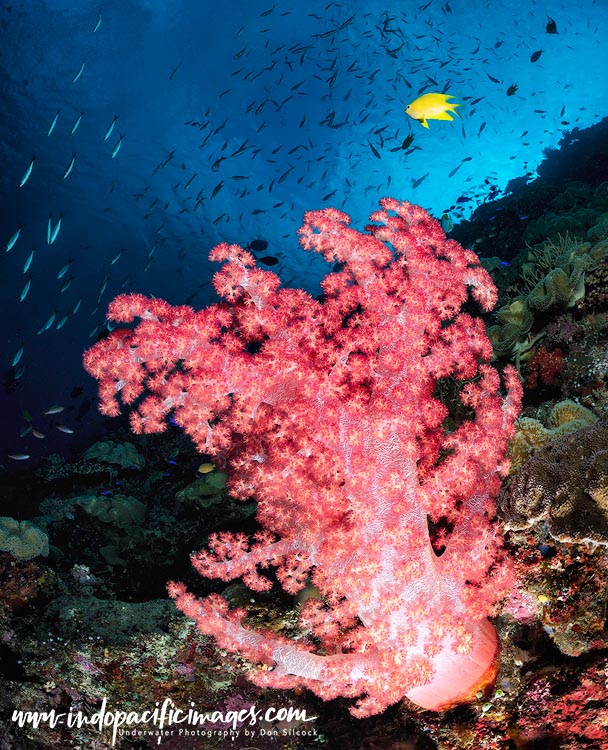

But wait, there’s more… The massive explosion that created the huge caldera on Garove Island also deposited rich, black volcanic ash. Both above and below the water. And, on land, it is those fertile soils that have allowed Dickie Dolyle’s copra and cocoa crops to flourish.
Underwater they have created places for critters to thrive in the black sand. And there is much to keep macro photographers happy at the Witu’s!


The Witu Islands – Signature Dive Sites…
Tempting as it is to give you the usual “laundry list” of the dive sites at the Witu Islands. Instead I wanted to just give you a flavor of what is there… Which I will do by describing the signature sites and let my images do the rest of the talking.
Dickies Knob
(I did warn you about the names…) Located on the western side of Garove Island, this site for me personified all that is great about the Witu’s. Incredible hard coral coverage on the top and around the sides of the reef.
Which then gradually gives away to the softer side of things. With superb sponges, vibrant red sea whips, beautiful sea fans and numerous colorful anemones. The fish life is prolific and out in the surrounding waters you will see patrolling, but usually shy, reef sharks.
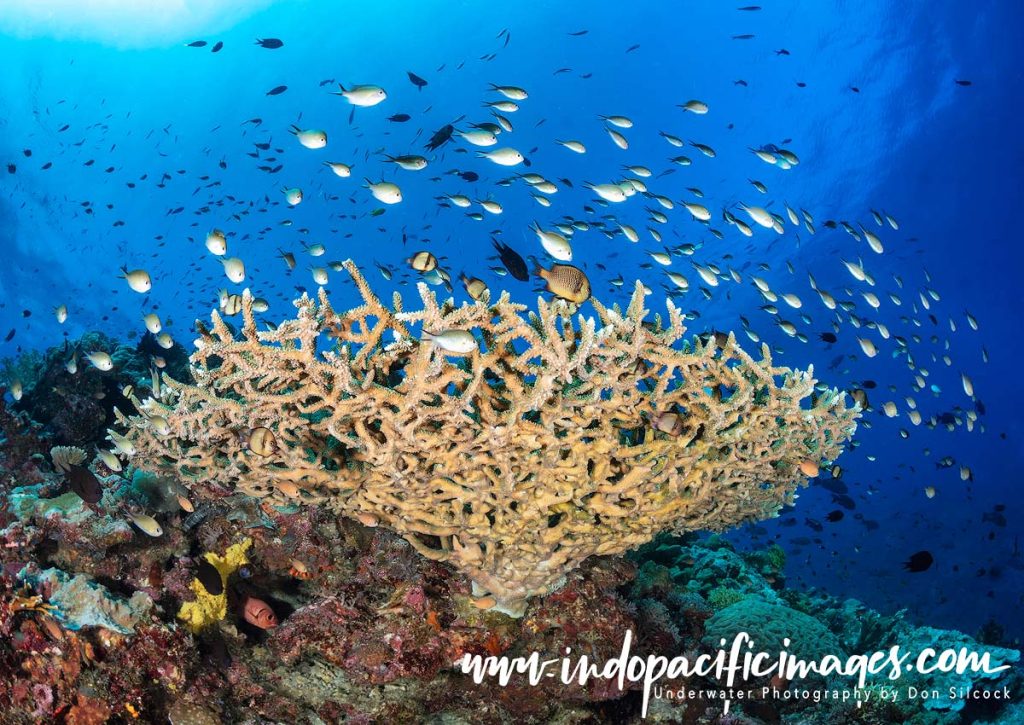
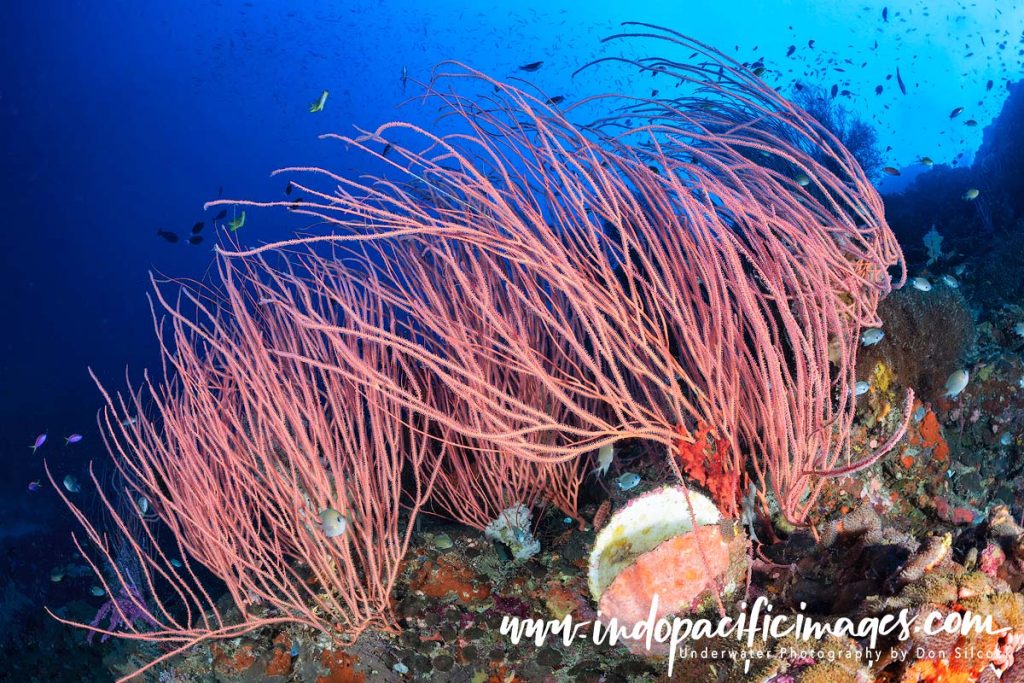
Dickies Gonads
As good as Dickies Knob is, there is an even better site just off from the main point. The Gonads is a relatively small, but quite deep seamount. It starts in around 30m and is best found by following a bearing from the main site. It’s only a few minutes swim, but you are really in the blue as you cross over – so it’s quite exciting!
Clearly you are limited on depth and time with such a site, but I was fortunate to dive it twice and was simply blown away by the incredible soft coral and sea fan growth around the top and first 10m of the seamount.
It was as good, if not better, than the very best I have seen on the Southern and Sagof-Daram archipelagos in Misool – generally considered as the best reefs in all of Indonesia’s Raja Ampat!
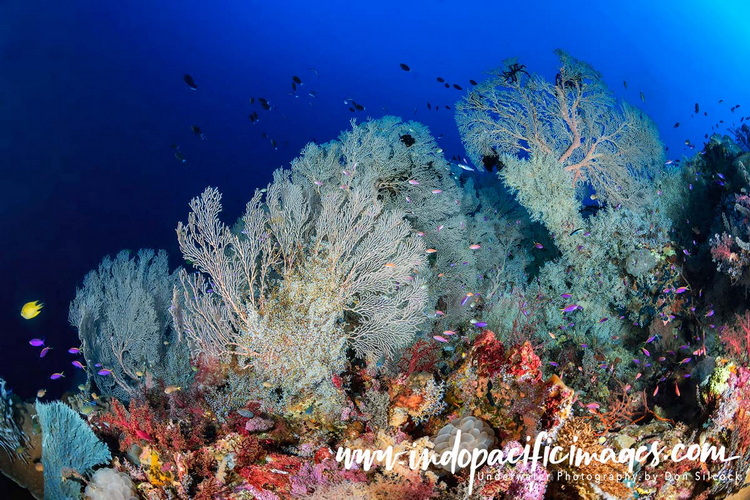
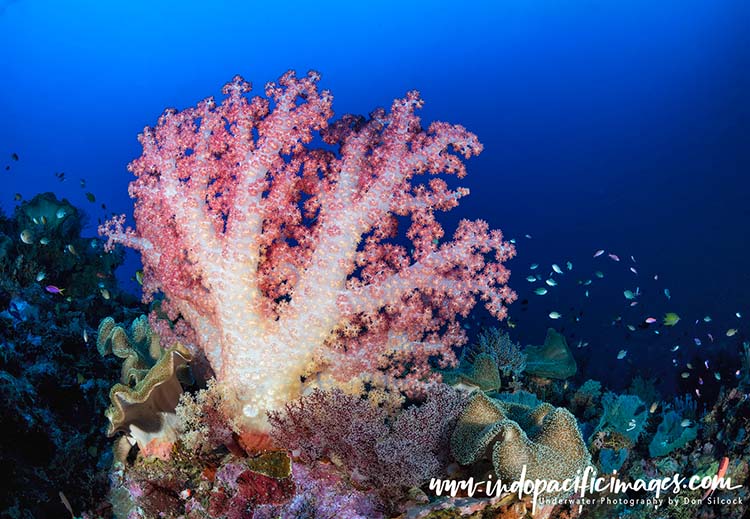
Goru Arches
This site is located at Cape Kurabo on the western tip of Mundua Island, and Alan Raabe must have been beside himself when this site was first discovered as it really is quite special!
As the name suggests, the site is all about the pair of very scenic arches. Which are on the sloping ridge that runs down in to the deep from the main reef. The site’s permanent mooring is perfectly located to dive on and return to from the ridge. As the the arches are at 23m, bottom time can become an issue as you explore the caves and what the rest of the site has to offer.
The arches are side by side and easy to find as you descend down the ridge. Plus they are quite safe to enter and exit. The surrounding area has a lot of nice sea fans and generally there is much to see. And when your bottom time is up you simply swim back up the ridge to the mooring.
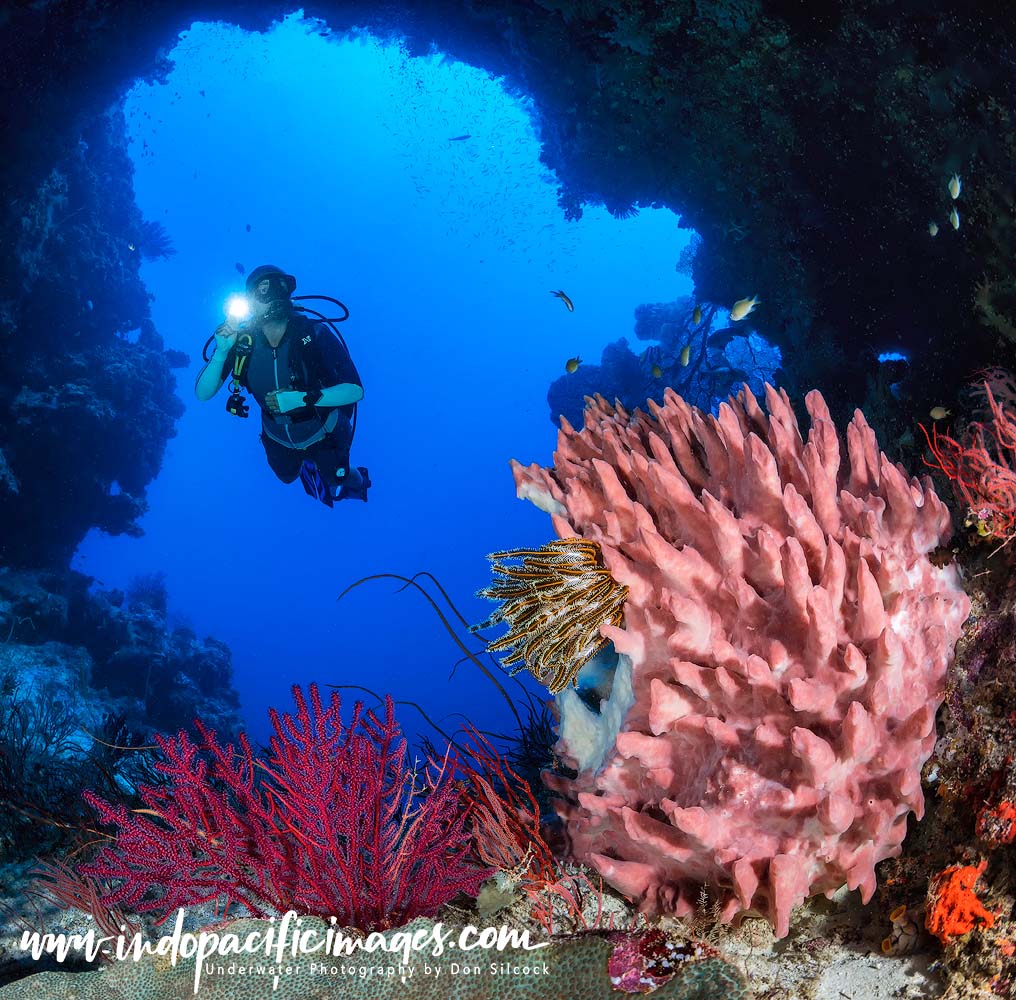
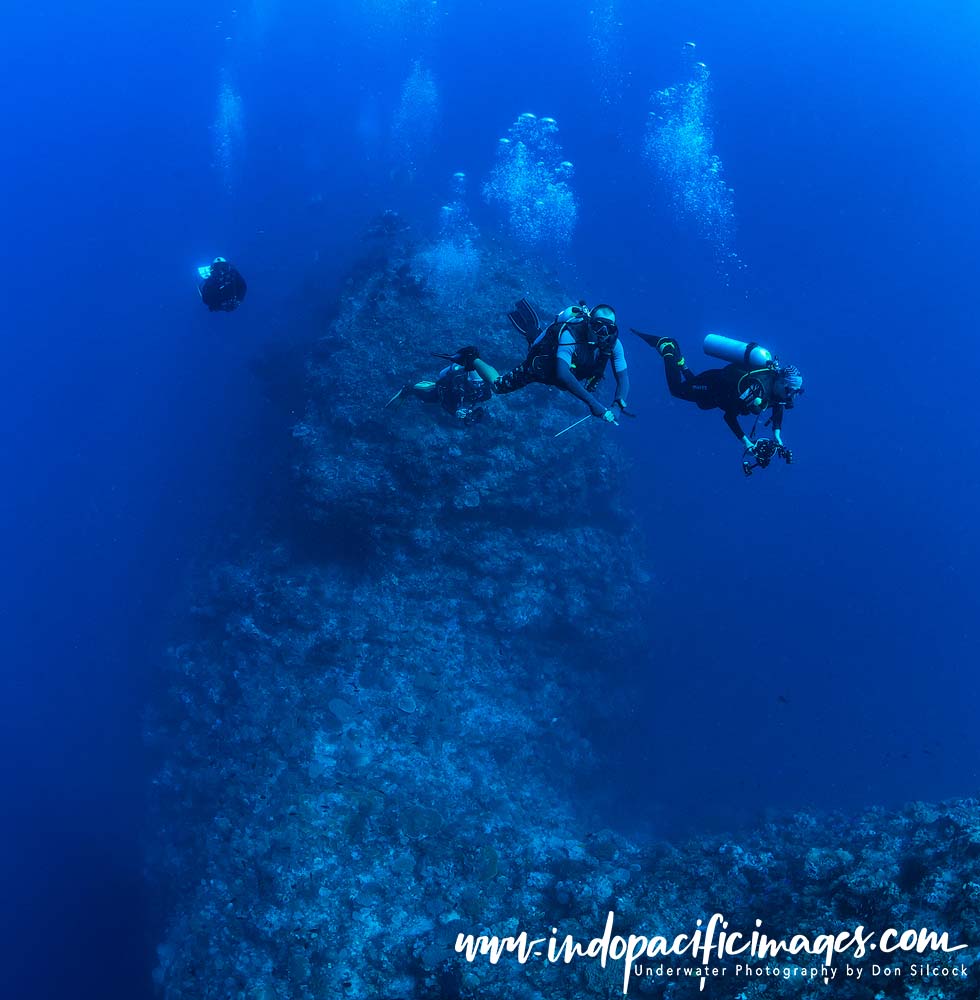
Wire Bay
Pronounced “weary bay”, this black sand bay is located on the south-west corner of Garove Island and provides a nice, safe anchorage so that open-deck diving can be followed.
There is a lot to see at Wire Bay and night dives are often exceptional for the smaller creatures of the ocean, but my favorite time to dive it is at first light. Because not far from where the boat anchors there is an incredible patch of cabbage coral that hosts numerous small reef fish. As the sun starts to rise it creates “cathedral” lighting that shines down on the cabbage coral creating a superb Kodak moment!
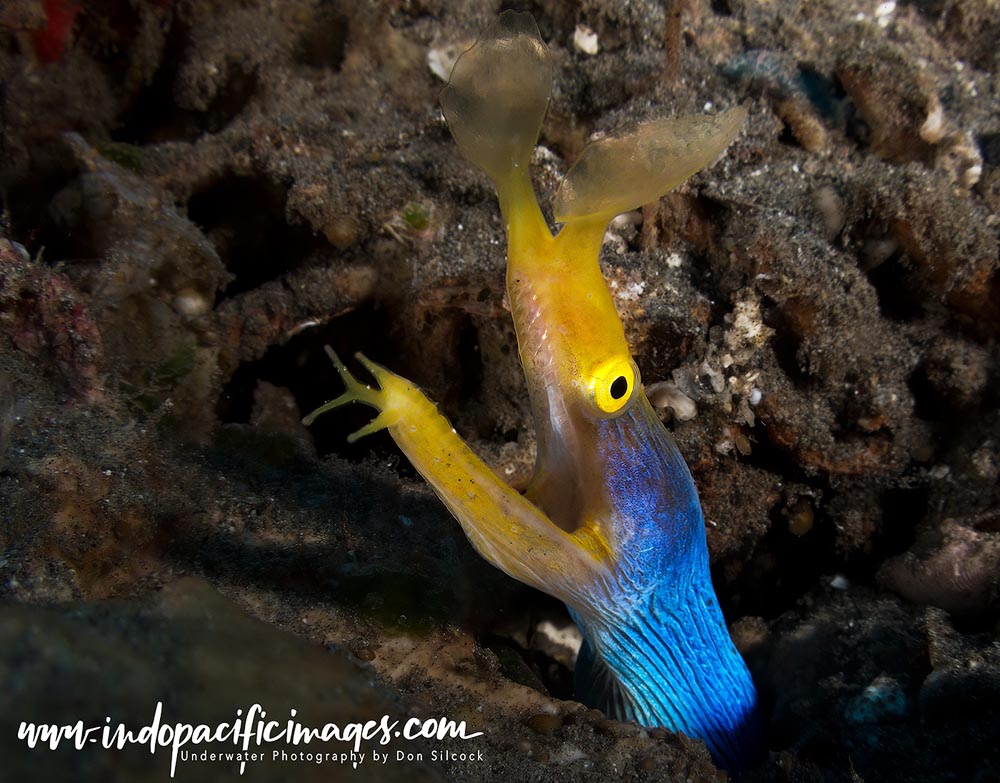
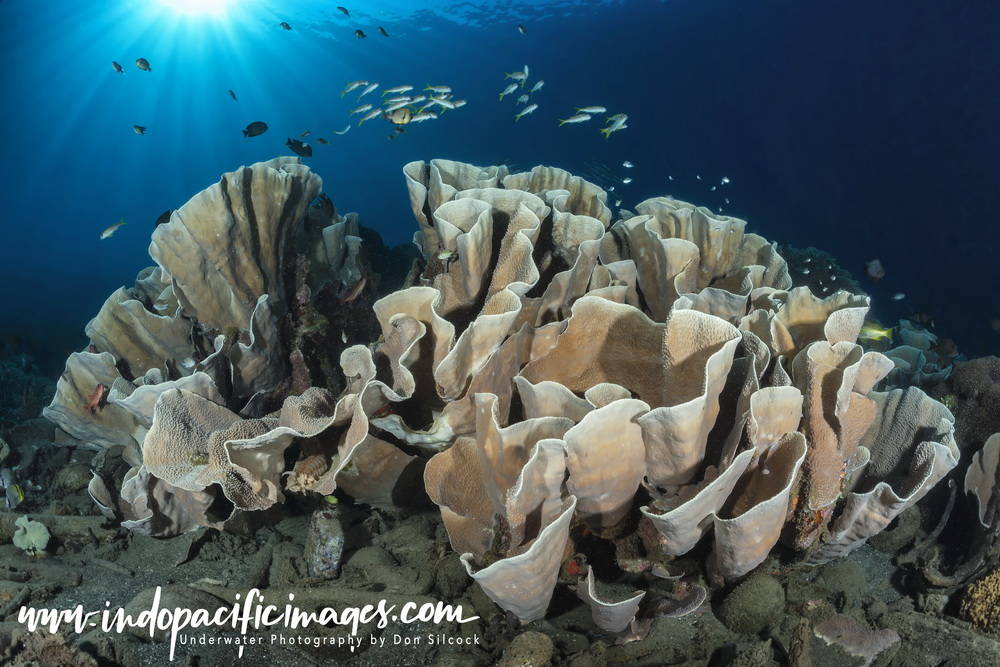
Overall a trip to the Witu Islands is an exceptional experience with superb diving. Together with incredible above water scenery and a friendly reception guaranteed from the local villagers.

Back To: The Complete Guide to Diving New Britain
